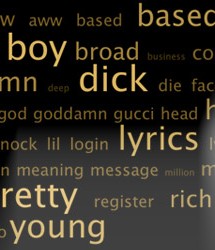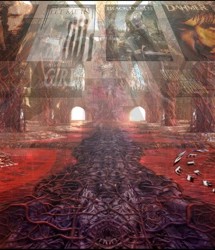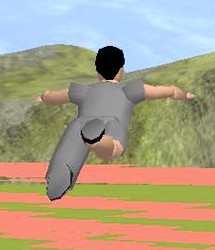Archive for July, 2011
Pool | July 2011
PDF Caitlin Denny Devin Kenny Eugene Kotlyarenko Jaakko Pallasvuo Patrick Armstrong Ry David Bradley Ryan Barone Timur Si-Qin Tom Moody

Post-Digital Being There: Werner Herzog, The Cave and Me
By Caitlin Denny Werner Herzog “The Enigma of Kasper Hauser” (1974) The character of Kaspar Hauser is one I continually look back upon when questioning my Being. Enigmatic, as the title of Herzog’s film suggests, not only because of his puzzling nature, but because of what is hidden within him. A cave dweller, uneducated to our ways, a man locked

…’Cause I look like a Cloud
By Devin Kenny In large swaths of the world, the Internet has served to widen access to tools with which we can connect with each other (albeit in an arguably superficial way). Those tools make themselves apparent in social networking & through the sharing of documents, music, video, images, etc. Internet usage has also altered the way in which we

Canons in the Slipstream
By Eugene Kotlyarenko Redefining the Origins of a Film Canon In the salvaged introduction of an abandoned book project, filmmaker and former critic, Paul Schrader - after much internal debate[1] - stakes a claim for the legitimacy of a film canon, with the idea that, unlike fine art and literature, cinema is a historically transitional art. Schrader[2] posits that because

Archaic Rendering
By Jaakko Pallasvuo Berlin, May 2011. I’m at an opening for Brand New Paint Job Extended, an exhibition by net artist Jon Rafman. A performance is about to begin. This is the last time I’m doing this, Rafman announces. Screen-captured footage from Second Life is projected onto a wall. We see Rafman’s avatar: a gigantic, poorly rendered Kool-Aid Man. The

Shades of Grey
By Patrick Armstrong Seth Price’s essay “Grey Flags,” putatively a work of art, serves as the press release for two eponymous exhibitions. One put up at Friedrich Petzel in July of 2005 and the other at Sculpture Center about a year later, the two ‘Grey Flags’ exhibitions do not include any of the same pieces and share solely Price’s essay.

Novelty & Whatever Comes Next After Contemporary Art
By Ry David Bradley PDF PART ONE “Citius, Altius, Fortius.” - Pierre de Coubertin Just like science, and sport – which constantly seek to build on or trump the feats of their predecessors, art is predominantly concerned with going beyond its history, with a series of Oedipal impulses[i]. Despite the clever anti-progressive statements of the Post-Modernists, they too were seeking

Occult Hands, Frozen Heads
By Ryan Barone Ten years into the Vietnam War, a new secret society was born in America. The origins are a bit unclear but according to most accounts it all started sometime in 1965, the same year that an enigmatic Dylan took the stage at the Newport Folk Festival and plugged in. And so it happened; the Order of the

Metamaterialism
By Timur Si-Qin With the emergence of Conceptual art in the 60s and 70s, artists, rather than having dematerialized or immaterialized their work, had instead shifted their palette from largely physical materials to largely virtual materials. The virtual as defined by Deleuze “is not opposed to “real” but opposed to “actual,” whereas “real” is opposed to “possible.” What is important

The Stubborn Dream of Everyday Virtuality
By Tom Moody In an interview in the early 2000s, Steven Lisberger, director of the first Tron movie (1982), talked about his goals for the film. Artists, he believed, could bring inspiring life to new technologies that might still be dry, baffling, and insular to the general public. With Tron, he sought to bestow a new kind of mythological identity
Issues
- August 2011 (10)
- July 2011 (10)
- June 2011 (10)
Recommended reading
- Casino Avec Bonus Sans Depot
- Gambling Sites Not On Gamstop
- Non Gamstop Casino
- Casinos Not On Gamstop
- Casino Not On Gamstop
- Non Gamstop Casino
- UK Online Casinos Not On Gamstop
- UK Online Casinos Not On Gamstop
- Non Gamstop Casinos
- Online Casino Canada
- Trusted Non Gamstop Casinos
- Casino Sites Not On Gamstop
- Non Gamstop Casinos UK
- Best Non Gamstop Casinos
- Casino Sites UK Only
- UK Casino Sites Not On Gamstop
- Casino Sites Not On Gamstop
- Meilleur Casino En Ligne France
- Meilleur Casino En Ligne France
- Non Gamstop Casino
- Best Online Casinos UK
- Casino En Ligne France
- Casino Sites Not On Gamstop
- Betting Sites That Are Not On Gamstop
- Migliori Casino Online